#Mary P Burrill
Text


Mary P. Burrill (deceased)
Gender: Female
Sexuality: Lesbian
DOB: August 1881
RIP: 13 March 1946
Ethnicity: African American
Occupation: Writer, playwright, professor, director, activist
#Mary P. Burrill#Mary P Burrill#lgbt history#female#lesbian#1881#rip#historical#black#poc#african american#writer#playwright#teacher#director#activist#popular#popular post#old hollywood
161 notes
·
View notes
Text
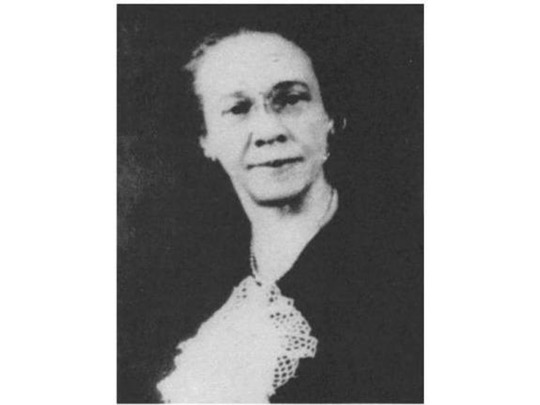
Mary P. Burrill: an early 20th-century playwright and educator.
#mary p burrill#lgbt#black lgbt#vintage queer#mary burrill#queer women of color#black queer women#lgbt women#black lgbt women#lgbt women of color#black playwrights#queer playwrights#lucy diggs slowe#20th century gay#black queer notables#lavandnoir
17 notes
·
View notes
Text
"I know you are too young now to become my wife, but I hope, darling, that in a few years you will come to me and be my love, my wife! How my brain whirls how my pulse leaps with joy and madness when I think of these two words, 'my wife'" -Angelina Weld Grimké wrote to Mary P Burrill at 16.
1 note
·
View note
Photo

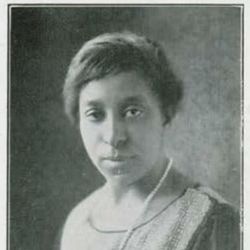
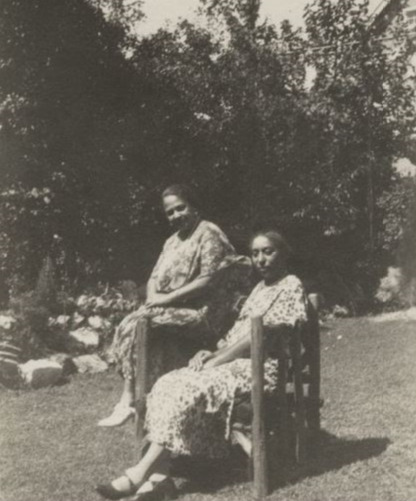

Lucille Diggs Slowe
Dates: July 4, 1885 – October 21, 1937
Audio available here.
Lucille Diggs Slowe was a pioneering Black American educator. Raised, and educated through high school in Baltimore, Slowe moved to DC in 1904 to attend Howard University. She graduated as valedictorian from Howard in 1908, and went on to begin her teaching career. The bulk of Slowe’s career was spent in educational institutions—first as a teacher in Baltimore, later as a principal in DC, and beginning in 1922, as Howard’s first Dean of Women. As Howard’s Dean of Women, Slowe championed expanded educational resources for women’s education and scholarship at the University. Her innovative work at Howard impacted the proliferation of women’s deanships at Black schools throughout the country.
1908, while Slowe was still an undergraduate at Howard, she became one of the original sixteen founders of Alpha Kappa Alpha Sorority, the first Greek letter organization by and for African-American women. Black fraternities and sororities like AKA were founded with the intention of creating opportunities for Black college students to connect and build power in a segregated society.
A prolific member of Black organizations, Slowe helped to create multiple national groups designed to uplift Black women. In 1935, Slowe helped to organize the National Council of Negro Women. Later, became a founder and the first president of the National Association of College Women.
In addition to her career in education, Slowe was also an accomplished tennis player. In 1917 she won a national title at the American Tennis Association tournament— the first Black woman to win a major sports title.
For more than twenty years, Slowe was partnered with Mary P. Burrill, a Black American playwright and educator. They lived together, first in Northwest, and later in a house they purchased at 1256 Kearney Street in Northeast DC.
40 notes
·
View notes
Text
Angelina Weld Grimké
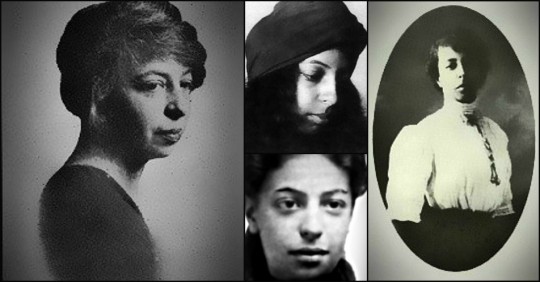
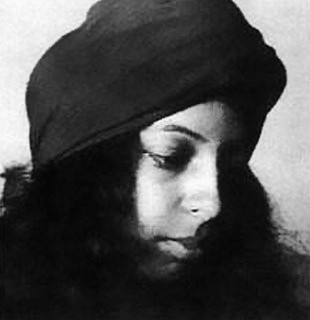



Angelina Weld Grimké (February 27, 1880 – June 10, 1958) was an American journalist, teacher, playwright and poet who came to prominence during the Harlem Renaissance. She was one of the first Woman of Colour/Interracial women to have a play publicly performed.
Life and career
Angelina Weld Grimké was born in Boston, Massachusetts, in 1880 to a biracial family. Her father, Archibald Grimké, was a lawyer and also of mixed race, son of a white planter. He was the second African American to have graduated from Harvard Law School. Her mother, Sarah Stanley, was European American from a Midwestern middle-class family. Information about her is scarce.
Grimké's parents met in Boston, where he had established a law practice. Angelina was named for her father's paternal white aunt Angelina Grimké Weld, who with her sister Sarah Grimké had brought him and his brothers into her family after learning about them after his father's death. (They were the "natural" mixed-race sons of her late brother, also one of the wealthy white Grimké planter family.)
When Grimké and Sarah Stanley married, they faced strong opposition from her family, due to concerns over race. The marriage did not last very long. Soon after their daughter Angelina's birth, Sarah left Archibald and returned with the infant to the Midwest. After Sarah began a career of her own, she sent Angelina, then seven, back to Massachusetts to live with her father. Angelina Grimké would have little to no contact with her mother after that. Sarah Stanley committed suicide several years later.
Angelina's paternal grandfather was Henry Grimké, of a large and wealthy slaveholding family based in Charleston, South Carolina. Her paternal grandmother was Nancy Weston, an enslaved woman of mixed race, with whom Henry became involved as a widower. They lived together and had three sons: Archibald, Francis and John (born after his father's death in 1852); they were majority white in ancestry. Henry taught Nancy and the boys to read and write. Among Henry's family were two sisters who had opposed slavery and left the South before he began his relationship with Weston; Sarah and Angelina Grimké became notable abolitionists in the North. The Grimkés were also related to John Grimké Drayton of Magnolia Plantation near Charleston, South Carolina. South Carolina had laws making it difficult for an individual to manumit slaves, even their own children born into slavery. Instead of trying to gain the necessary legislative approval for each manumission, wealthy fathers often sent their children north for schooling to give them opportunities, and hoping they would stay to live in a free state.
Angelina's uncle, Francis J. Grimké, graduated from Lincoln University, PA and Princeton Theological Seminary. He became a Presbyterian minister in Washington, DC. He married Charlotte Forten. She became known as an abolitionist and diarist. She was from a prominent family of color in Philadelphia who were strong abolitionists.
From the ages of 14 to 18, Angelina lived with her aunt and uncle, Charlotte and Francis, in Washington, DC and attended school there. During this period, her father was serving as US consul (1894 and 1898) to the Dominican Republic. Indicating the significance of her father's consulship in her life, Angelina later recalled, "it was thought best not to take me down to [Santo Domingo] but so often and so vivid have I had the scene and life described that I seem to have been there too."
Angelina Grimké attended the Boston Normal School of Gymnastics, which later developed as the Department of Hygiene of Wellesley College. After graduating, she and her father moved to Washington, D.C. to be with his brother Francis and family.
In 1902, Grimké began teaching English at the Armstrong Manual Training School, a black school in the segregated system of the capitol. In 1916 she moved to a teaching position at the Dunbar High School for black students, renowned for its academic excellence, where one of her pupils was the future poet and playwright May Miller. During the summers, Grimké frequently took classes at Harvard University, where her father had attended law school.
Around 1913, Grimké was involved in a train crash which left her health in a precarious state. After her father took ill in 1928, she tended to him until his death in 1930. Afterward, she left Washington, DC, for New York City, where she settled in Brooklyn. She lived a quiet retirement as a semi-recluse. She died in 1958.
Literary career
Grimké wrote essays, short stories and poems which were published in The Crisis, the newspaper of the NAACP, edited by W.E.B. Du Bois; and Opportunity. They were also collected in anthologies of the Harlem Renaissance: The New Negro, Caroling Dusk, and Negro Poets and Their Poems. Her more well-known poems include "The Eyes of My Regret", "At April", "Trees" and "The Closing Door". While living in Washington, DC, she was included among the figures of the Harlem Renaissance, as her work was published in its journals and she became connected to figures in its circle. Some critics place her in the period before the Renaissance. During that time, she counted the poet Georgia Douglas Johnson as one of her friends.
Grimké wrote Rachel – originally titled Blessed Are the Barren – one of the first plays to protest lynching and racial violence. The three-act drama was written for the National Association for the Advancement of Colored People (NAACP), which called for new works to rally public opinion against D. W. Griffith's recently released film, The Birth of a Nation (1915), which glorified the Ku Klux Klan and portrayed a racist view of blacks and of their role in the American Civil War and Reconstruction in the South. Produced in 1916 in Washington, D.C., and subsequently in New York City, Rachel was performed by an all-black cast. Reaction to the play was good. The NAACP said of the play: "This is the first attempt to use the stage for race propaganda in order to enlighten the American people relating to the lamentable condition of ten millions of Colored citizens in this free republic."
Rachel portrays the life of an African-American family in the North in the early 20th century. Centered on the family of the title character, each role expresses different responses to the racial discrimination against blacks at the time. The themes of motherhood and the innocence of children are integral aspects of Grimké's work. Rachel develops as she changes her perceptions of what the role of a mother might be, based on her sense of the importance of a naivete towards the terrible truths of the world around her. A lynching is the fulcrum of the play.
The play was published in 1920, but received little attention after its initial productions. In the years since, however, it has been recognized as a precursor to the Harlem Renaissance. It is one of the first examples of this political and cultural movement to explore the historical roots of African Americans.
Grimké wrote a second anti-lynching play, Mara, parts of which have never been published. Much of her fiction and non-fiction focused on the theme of lynching, including the short story, "Goldie." It was based on the 1918 lynching in Georgia of Mary Turner, a married black woman who was the mother of two children and pregnant with a third.
Sexuality
At the age of 16, Grimké wrote to a friend, Mary P. Burrill:
I know you are too young now to become my wife, but I hope, darling, that in a few years you will come to me and be my love, my wife! How my brain whirls how my pulse leaps with joy and madness when I think of these two words, 'my wife'"
Two years earlier, in 1903, Grimké and her father had a falling out when she told him that she was in love. Archibald Grimké responded with an ultimatum demanding that she choose between her lover and himself. Grimké family biographer Mark Perry speculates that the person involved may have been female, and that Archibald may already have been aware of Angelina's sexual leaning.
Analysis of her work by modern literary critics has provided strong evidence that Grimke was lesbian or bisexual. Some critics believe this is expressed in her published poetry in a subtle way. Scholars found more evidence after her death when studying her diaries and more explicit unpublished works. The Dictionary of Literary Biography: African-American Writers Before the Harlem Renaissance states: "In several poems and in her diaries Grimké expressed the frustration that her lesbianism created; thwarted longing is a theme in several poems." Some of her unpublished poems are more explicitly lesbian, implying that she lived a life of suppression, "both personal and creative.”
Wikipedia
3 notes
·
View notes
Text
FEBRUARY 27: Angelina Weld Grimké (1880-1958)
Black wlw have always existed, and they’ve always been pretty rad, and Angelina Weld Grimké is no exception. A writer, journalist, and teacher, she made significant contributions to the Harlem Renaissance movement, and was among the first woc writers to have a play publicly performed.
Her last name, Grimké, is often associated to the Grimké sisters, Angelina and Sarah, who were the only known white Southern women to be a part of the abolition movement. Angelina and Sarah were the aunts of Archibald Grimké, a lawyer, the second Black graduate of Harvard Law School, and the mixed-race son of a white planter and a mixed-race slave, Nancy Weston. Archibald married Sarah Stanley, a white woman, and Angelina Weld Grimké was born in Boston in 1880. However, shortly after her birth, her mother left to head back to her family in the Midwest, taking Angelina with her. When Angelina was 7, she was sent back to Massachusetts and from then on had almost no contact with her mother, until Sarah committed suicide a few years later.
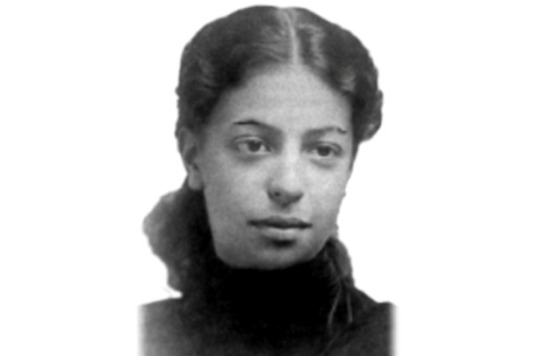
Angelina Weld Grimké
As a teenager, Angelina lived with her aunt and uncle in DC, while her father served as US consul in the Dominican Republic. She attended the Boston Normal School of Gymnastics, and moved back to DC after graduating. She started teaching English in 1902, in the segregated school system of DC. In 1916, she moved to Dunbar High School, an institution known for its academic excellence. She often also took summer classes at Harvard. Around 1913, Grimké survived from a train crash, though her health never fully recovered. After her father’s death in 1930, she moved to Brooklyn and there lived as a semi-recluse until her death in 1958.
In parallel to her teaching career, she wrote extensively, with many of her essays, stories, and poems appearing in the NAACP newspaper, The Crisis (edited at the time by W.E.B. Du Bois), or collected in anthologies of the Harlem Renaissance. One of her most well-known plays is Rachel, originally entitled Blessed Are the Barren; it is recognized as one of the first plays to protest lynching and racial violence, and was written as a response to a call the NAACP put out, seeking new literary works to denounce KKK extremism and racism.
Analysis of her work and letters has convinced modern critics that Grimké was lesbian or bisexual. I mean:
I know you are too young now to become my wife, but I hope, darling, that in a few years you will come to me and be my love, my wife! How my brain whirls how my pulse leaps with joy and madness when I think of these two words, “my wife”
She wrote this to a friend, Mary P. Burrill, at the age of 16. Her diaries and unpublished works point more explicitly at her love of women, though this is often expressed as thwarted and repressed. Though it is unfortunate she did not get the opportunity to lead a more fulfilling life in that regard, we hope you’ll keep on reading and learning more about her work to preserve her legacy!
-AK
#365daysoflesbians#angelina weld grimké#writer#literature#usa#people#19th century#20th century#black wlw#black lesbians#mixed race lesbians#mixed race wlw#wlw#lesbian#bi women#queer#queer women#lgbt#queer history#lgbt history#harlem renaissance#black queer women
70 notes
·
View notes
Text
I get so geeked when I find lesbian and bisexual women from older times.
Did y’all know Angela Weld Grimke (black/mixed race poet, writer, playwright and niece of the Grimke Sisters - white abolitionists) was in a relationship with Mary P Burrill (black playwright of the Harlem Renaissance)
0 notes
Photo

If you’re on the physical self guided tour, check out our Google Map with these locations:
William Dorsey Swann (1114 F St NW, where Swann used to throw Balls)
Lucille Diggs Slowe (1256 Kearney Street in NE, home shared with Mary P. Burrill)
Mary P. Burrill (101 N St NW, Dunbar High School, where Burrill was a student and later on, a teacher)
Alain Locke (2441 6th Street NW, Howard University Dept. of Philosophy, where Locke was chair)
Protest Against Police Entrapment (US Marine Corps Memorial, Arlington VA)
Enik Alley Coffeehouse (alley near I St and 8th St NE)
Rayceen Pendarvis (1640 Rhode Island Ave NW, taping location of the Ask Rayceen Show)
First Black Lesbian and Gay Pride Festival (2500 Georgia Ave NW)
The Clubhouse (1296 Upshur St NW)
19 notes
·
View notes
Photo

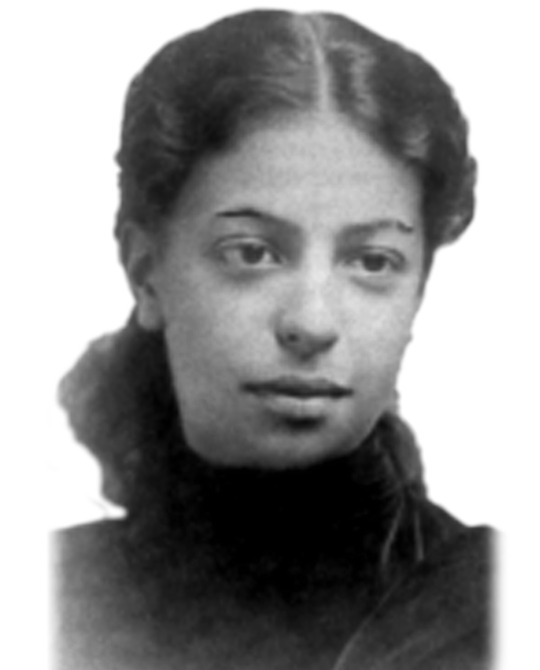

Mary P. Burrill
Dates: August 1881 – March 13, 1946
Audio available here.
Mary P. Burrill was an early twentieth-century Black American playwright and educator. Burrill was born in DC and attended high school in the city. For many years, Burril taught English, speech, and drama at Dunbar High School in DC, the same school from which she had graduated (although at the time of Burrill’s graduation it was called M Street High School). She was an impactful teacher and encouraged her students to write plays. Two of her students, Willis Richardson and May Miller, became pioneering playwrights themselves.
For more than twenty years, Burrill was partnered with Lucille Diggs-Slowe, the first Dean of Women at Howard University and one of the founders of AKA Sorority. They lived together, first in Northwest, and later in a house they purchased at 1256 Kearney Street in Northeast DC. In her early life, Burrill also had an emotional and possibly erotic relationship with Angelina Weld Grimké, who would later become a well known playwright and poet herself.
Burrill’s most notable works include The Other Wise Man (1905?), They That Sit in Darkness (1919), Aftermath (1919). Her plays touch on topics such as lynching, women’s autonomy, birth control, and poverty. Notably, two of Burrill’s best known works, They That Sit in Darkness and Aftermath, premiered in white-owned publications. Although there is no written indication of the reason she chose these publications, opportunities for a queer Black woman playwright to be published in the early twentieth century were very limited. They That Sit in Darkness was published Margaret Sanger’s Birth Control Review, and Aftermath in a communist publication, The Liberator. It is also worth noting that although Margaret Sanger (publisher of the journal that premiered one of Burrill’s best-known plays) was an advocate for access to birth control, she believed in eugenics, a set of ideas which many understand to be fundamentally white supremacist.
19 notes
·
View notes